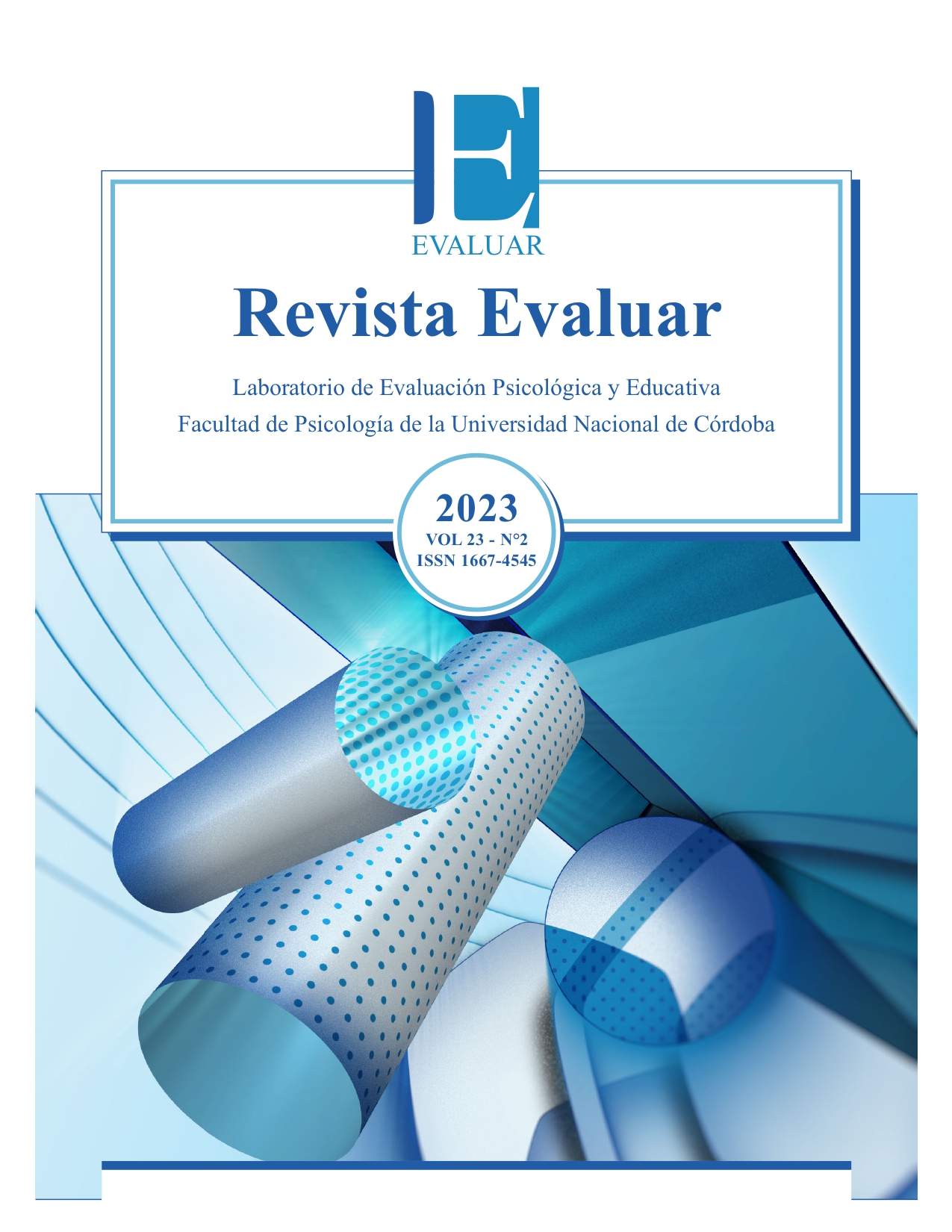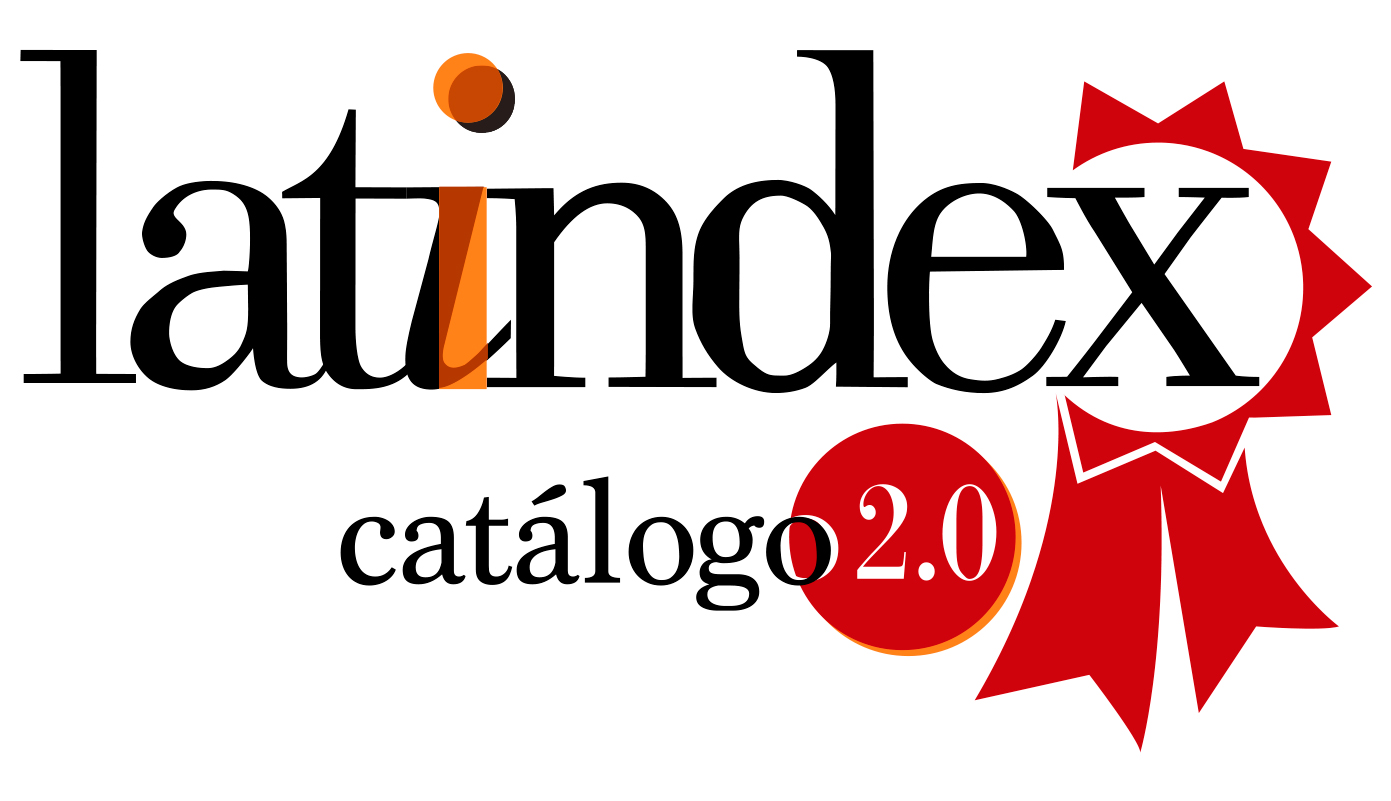Assessing Critical Thinking Skills: A Diagnosis of Elementary Students
DOI:
https://doi.org/10.35670/1667-4545.v23.n2.42069Keywords:
assessment, critical thinking, skills, normative data in primary education, gender differencesAbstract
Critical thinking (CT) is a central aim of the 21st century education, although its research lacks consensus, has been unequal and lacking in primary evaluation issues and primary education. These weaknesses justify the aim of this study: evaluating primary students’ mastery of CT skills. The quantitative methodology diagnoses six CT skills (prediction, logical reasoning, comparison, classification, decision-making, and problem-solving) through a 48-item test, which 655 sixth-graders completed. The students display an average global mastery of the CT items and skills, and the test’s and skill scores’ standardization are also presented. The comparison of boys and girls shows that girls perform better than boys on most test items. The diagnoses suggest an intermediate mastery of CT skills in students, where girls widely outperform boys, and also propose some educational implications.
Downloads
References
Aktoprak, A., & Hursen, C. (2022). A bibliometric and content analysis of critical thinking in primary education. Thinking Skills and Creativity, 44, 101029. https://doi.org/10.1016/J.TSC.2022.101029
Almerich, G., Suárez-Rodríguez, J., Díaz-García, I., & Orellana, N. (2020). Estructura de las competencias del siglo XXI en alumnado del ámbito educativo. Factores personales influyentes [Structure of 21st century competences in students the sphere of education. Influential personal factors]. Educación XX1, 23(1), 45-74. https://doi.org/10.5944/educXX1.23853
American Psychological Association APA (1990). Critical thinking: A statement of expert consensus for purposes of educational assessment and instruction (The Delphi Report). https://philarchive.org/archive/faccta
Bailin, S., Case, R., Coombs, J. R., & Daniels, L. B. (1999). Conceptualizing critical thinking. Journal of Curriculum Studies, 31(3), 285-302. https://doi.org/10.1080/002202799183133
Cohen, J. (1988). Statistical power analysis for the behavioral sciences, 2nd ed. Academic Press.
Colom, R., García Moriyón, F., Magro, C. & Morilla, E. (2014). The long-term impact of philosophy for children: A longitudinal study (Preliminary results). Analytic Teaching and Philosophical Praxis, 35(1), 50-56. https://journal.viterbo.edu/index.php/atpp/article/view/1129
Dwyer, C. P., Hogan, M. J., & Stewart, I. (2014). An integrated critical thinking framework for the 21st century. Thinking Skills and Creativity, 12, 43-52. https://doi.org/10.1016/J.TSC.2013.12.004
Ennis, R. H. (2018). Critical thinking across the curriculum: A vision. Topoi, 37, 165-184. https://doi.org/10.1007/ s11245-016-9401-4
Ennis, R. H. & Chattin, G. S. (2018). An annotated list of critical thinking tests. http://criticalthinking.net/wp-content/uploads/2018/01/An-Annotated-List-of-English-Language-Critical-Thinking-Tests.pdf
Ennis, R. H., & Millman, J. (2005a). Cornell Critical Thinking Test Level X. The Critical Thinking Company.
Ennis, R. H., & Millman, J. (2005b). Cornell Critical Thinking Test Level Z. The Critical Thinking Company.
European Union (2014). Key competence development in school education in Europe. KeyCoNet’s review of the literature: A summary. European Schoolnet. http://keyconet.eun.org
Facione, P. A. (1990). Critical thinking: A statement of expert consensus for purposes of educational assessment and instruction. Research findings and recommendations. American Philosophical Association. https://eric.ed.gov/?id=ED315423
Facione, P. A. (1998). Insight assessment. www.insightassessment.com
Facione, P. A., Facione, N. C., Blohm, S.W., Howard, K., & Giancarlo, C. A. F. (1998). California Critical Thinking Skills Test: Manual (Revised). California Academic Press.
Fernández, A., Pérez, E., Alderete, A. M., Richaud, M. C., & Fernández Liporace, M. (2010). ¿Construir o adaptar tests psicológicos? Diferentes respuestas a una cuestión controvertida. Revista Evaluar, 10(1). https://doi.org/10.35670/1667-4545.v10.n1.459
Ferrando, P. J., & Lorenzo-Seva, U. (2017). Program FACTOR at 10: Origins, development and future directions. Psicothema, 29, 236-240. https://doi.org/10.7334/psicothema2016.304
Ferrando, P. J., & Lorenzo-Seva U. (2018). Assessing the quality and appropriateness of factor solutions and factor score estimates in exploratory item factor analysis. Educational and Psychological Measurement, 78, 762-780. https://doi.org/10.1177/0013164417719308
Fisher, A. (2009). Critical thinking. An introduction. Cambridge University Press.
Fisher, A. (2021). On what critical thinking is. In J. A. Blair (Ed.), Studies in critical thinking (2nd ed., pp. 7-26). University of Windsor. https://doi.org/10.22329/wsia.08.2019
Follmann, D., Mattos, K. R. C., & Güllich, R. I. da C. (2018). Teaching strategies of sciences and the promotion of critical thinking in Portugal. Tecné, Episteme y Didaxis (Extraordinario, Octavo Congreso Internacional de formación de Profesores de Ciencias para la Construcción de Sociedades Sustentables). https://revistas.pedagogica.edu.co/index.php/ESD/article/view/8789
Fullan, M., & Scott, G. (2014). Education PLUS. Collaborative Impact SCT. https://michaelfullan.ca
Funder, D. C., & Ozer, D. J. (2019). Evaluating effect size in psychological research: Sense and nonsense. Advances in Methods and Practices in Psychological Science, 2(2), 156-168. https://doi.org/10.1177/2515245919847202
Gelerstein, D., del Río, R., Nussbaum, M., Chiuminatto, P., & López, X. (2016). Designing and implementing a test for measuring critical thinking in primary school. Thinking Skills and Creativity, 20, 40-49. https://doi.org/10.1016/J.TSC.2016.02.002
Halpern , D. F. (2003). Thought and knowledge: An introduction to critical thinking. Laurence Erlbaum Associates.
Halpern, D. F. (2007). Halpern Critical Thinking Assessment using everyday situations: Background and scoring standards. Claremont McKenna College.
Halpern , D. F. (2010). Manual Halpern Critical Thinking Assessment. Schuhfried GmbH.
Hattie, J. (2009). Visible learning: A synthesis of over 800 meta-analyses relating to achievement. Routledge.
International Society for Technology Education. (2003). National educational technology standards for teachers: Preparing teachers to use technology. ISTE.
Jäncke, L. (2018). Sex/gender differences in cognition, neurophysiology, and neuroanatomy. F1000Research, 7,805. https://doi.org/10.12688/f1000research.13917.1
Krathwohl, D. (2002). A revision of Bloom‘s taxonomy: An Overview. Theory into Practice, 41, 212-218. https://doi.org/10.1207/s15430421tip4104_2
Lai, E. R. (2011). Critical thinking: A literature review. Pearson’s research reports, 6, 1-49.
Lipman, M. (1982). Philosophy for Children. Thinking: The Journal of Philosophy for Children, 3(3/4), 35-44. https://doi.org/10.5840/thinking1982339
Lopes, J., Silva, H., & Morais, E. (2018). Teste de pensamento crítico para estudantes dos ensinos básico e secundário [Critical thinking test for elementarý and secondary students]. Revista de Estudios e Investigación en Psicología y Educación, 5(2), 82-91. https://doi.org/10.17979/reipe.2018.5.2.3339
Lorenzo-Seva, U., & Ferrando, P. J. (2019). Robust promin: A method for diagonally weighted factor rotation. LIBERABIT, Revista Peruana de Psicología, 25, 99-106. https://doi.org/10.24265/liberabit.2019.v25n1.08
Madison, J. (2004). James Madison critical thinking course. The Critical Thinking Co.
Manassero-Mas, M. A., & Vázquez-Alonso, A. (2019). Taxonomía de las destrezas de pensamiento: una herramienta clave para la alfabetización científica [Taxonomy of thinking skills: A key tool for scientific literacy]. In M. D. Maciel & E. Albrecht (Org.), Ciência, Tecnologia & Sociedade: Ensino, Pesquisa e Formação (pp. 17-38). UNICSUL.
Manassero-Mas, M. A., & Vázquez-Alonso, A. (2020a). Evaluación de destrezas de pensamiento crítico: Validación de instrumentos libres de cultura [Assessment of critical thinking skills: Validation of free-culture tools]. Tecné, Epistemé y Didaxis, 47, 15-32. https://doi.org/10.17227/ted.num47-9801
Manassero-Mas, M. A., & Vázquez-Alonso, A. (2020b). Las destrezas de pensamiento y las calificaciones escolares en educación secundaria: Validación de un instrumento de evaluación libre de cultura [Thinking skills and school grades in secondary education: Validation of a culture-free assessment instrument]. Tecné, Epistemé y Didaxis, 48, 33-54. https://doi.org/10.17227/ted.num48-12375
Manassero-Mas, M. A., & Vázquez-Alonso, A. (in press). Assessment of critical thinking skills in primary education: Validation of Challenges of Thinking Test. Thinking Skills and Creativity.
Mapeala, R., & Siew, N. M. (2015). The development and validation of a test of science critical thinking for fifth graders. SpringerPlus, 4(1). https://doi.org/10.1186/s40064-015-1535-0
Meng, K.H. (2016). Infusion of critical thinking across the English language curriculum: A multiple case study of primary school in-service expert teachers in Singapore. Ph.D. Thesis, University of Western Australia, Perth, Australia.
Muñiz, J., & Fonseca-Pedrero, E. (2019). Diez pasos para la construcción de un test [Ten steps for test development]. Psicothema, 31(1), 7-16. https://doi.org/10.7334/psicothema2018.291
National Education Association. (2012). Preparing 21st-century students for a global society: An educator’s guide to the “four Cs”. National Education Association.
National Research Council. (2012). Education for life and work: Developing transferable knowledge and skills in the 21st century. The National Academies Press. https://doi.org/10.17226/13398
Organization for Economic Co-operation and Development. (2018). The future of education and skills. Education 2030. OECD Publishing. https://www.oecd.org/education/2030-project/contact
Paul, R., & Nosich, G. M. (1993). A model for the national assessment of higher order thinking. In R. Paul (Ed.), Critical thinking: What every student needs to survive in a rapidly changing world (pp. 78-123). Foundation for Critical Thinking.
Pérez-Morán, G., Bazalar-Palacios, J., & Arhuis-Inca, W. (2021). Diagnóstico del pensamiento crítico de estudiantes de educación primaria de Chimbote, Perú [Diagnosis of critical thinking of elementary school students in Chimbote, Peru]. Revista Electrónica Educare, 25(1), 289-299. https://dx.doi.org/10.15359/ree.25-1.15
Piaget, J., & Inhelder, B. (1997). Psicología del niño [The psychology of the child]. Morata.
Rivas, S. F., & Saiz, C. (2012). Validación y propiedades psicométricas de la prueba de pensamiento crítico PENCRISAL. Revista Electrónica de Metodología Aplicada, 17(1), 18-34. https://reunido.uniovi.es/index.php/Rema/index
Rosenthal, J. A. (1996). Qualitative descriptors of strength of association and effect size. Journal of Social Service Research, 21(4), 37-59. https://doi.org/10.1300/J079v21n04_02
Saiz-Sánchez, C. (2017). Pensamiento crítico y cambio. Pirámide.
Schäfer, T., & Schwarz, M. A. (2019). The meaningfulness of effect sizes in psychological research: Differences between sub-disciplines and the impact of potential biases. Frontiers in Psychology, 10. https://doi.org/10.3389/fpsyg.2019.00813
Shayer, M., & Adey, P. S. (Eds.) (2002). Learning intelligence: Cognitive acceleration across the curriculum from 5 to 15 years. Open University Press.
Sierra-Paz, J., Carpintero-Molina, E., & Pérez-Sánchez, L. (2010). Pensamiento crítico y capacidad intelectual. Faísca Revista de divulgación científica sobre las altas capacidades intelectuales, 15(17), 98-110. https://www.revistafaisca.es
Swartz, R. J., Costa, A. L., Beyer, B. K., Reagan R., & Kallick, B. (2013). El aprendizaje basado en el pensamiento. Cómo desarrollar en los alumnos las competencias del siglo XXI [Thinking-based learning. Promoting quality student achievement in the 21st Century]. Ediciones SM.
Tremblay, K., Lalancette, D., & Roseveare, D. (2012). AHELO. Assessment of higher education learning outcomes. Volume 1 - Design and implementation (Feasibility Study Report). OECD. http://www.oecd.org/education/skills-beyond-school
UNESCO. (2016). Education 2030: Incheon declaration and framework for action for the implementation of sustainable development goal 4: Ensure inclusive and equitable quality education and promote lifelong learning opportunities for all. https://unesdoc.unesco.org
Valenzuela, J. (2008). Habilidades de pensamiento y aprendizaje profundo. Revista Iberoamericana de Educación, 46(7), 1-9. https://doi.org/10.35362/rie4671914
Ventura-León, J. (2018). Otras formas de entender la d de Cohen [Other ways of understanding Cohen’s d]. Revista Evaluar, 18(3). https://doi.org/10.35670/1667-4545.v18.n3.22305
Vincent-Lancrin, S., González-Sancho, C., Bouckaert, M., de Luca, F., Fernández-Barrerra, M., Jacotin, G., Urgel, J., & Vidal, Q. (2019). Fostering students’ creativity and critical thinking. OECD. https://doi.org/10.1787/62212c37-en
Walton, D., & Macagno, F. (2015). A classification system for argumentation schemes. Argument and Computation, 6(3), 214-249. https://www.tandfonline.com/loi/tarc20
Watson, G., & Glaser, E. M. (2002). Watson-Glaser Critical Thinking Appraisal-II Form E. Pearson.
World Economic Forum (2021). These are the top 10 job skills of tomorrow - and how long it takes to learn them.
Downloads
Published
How to Cite
Issue
Section
License

This work is licensed under a Creative Commons Attribution 4.0 International License.
Revista Evaluar aplica la Licencia Internacional de Atribuciones Comunes Creativas (Creative Commons Attribution License, CCAL). Bajo esta licencia, los autores retienen la propiedad de copyright de los artículos pero permiten que, sin que medie permiso de autor o editor, cualquier persona descargue y distribuya los artículos publicados en Evaluar. La única condición es que siempre y en todos los casos se cite a los autores y a la fuente original de publicación (i.e. Evaluar). El envío de artículos a Evaluar y la lectura de los mismos es totalmente gratuito.




_(3).jpg)



.jpg)



